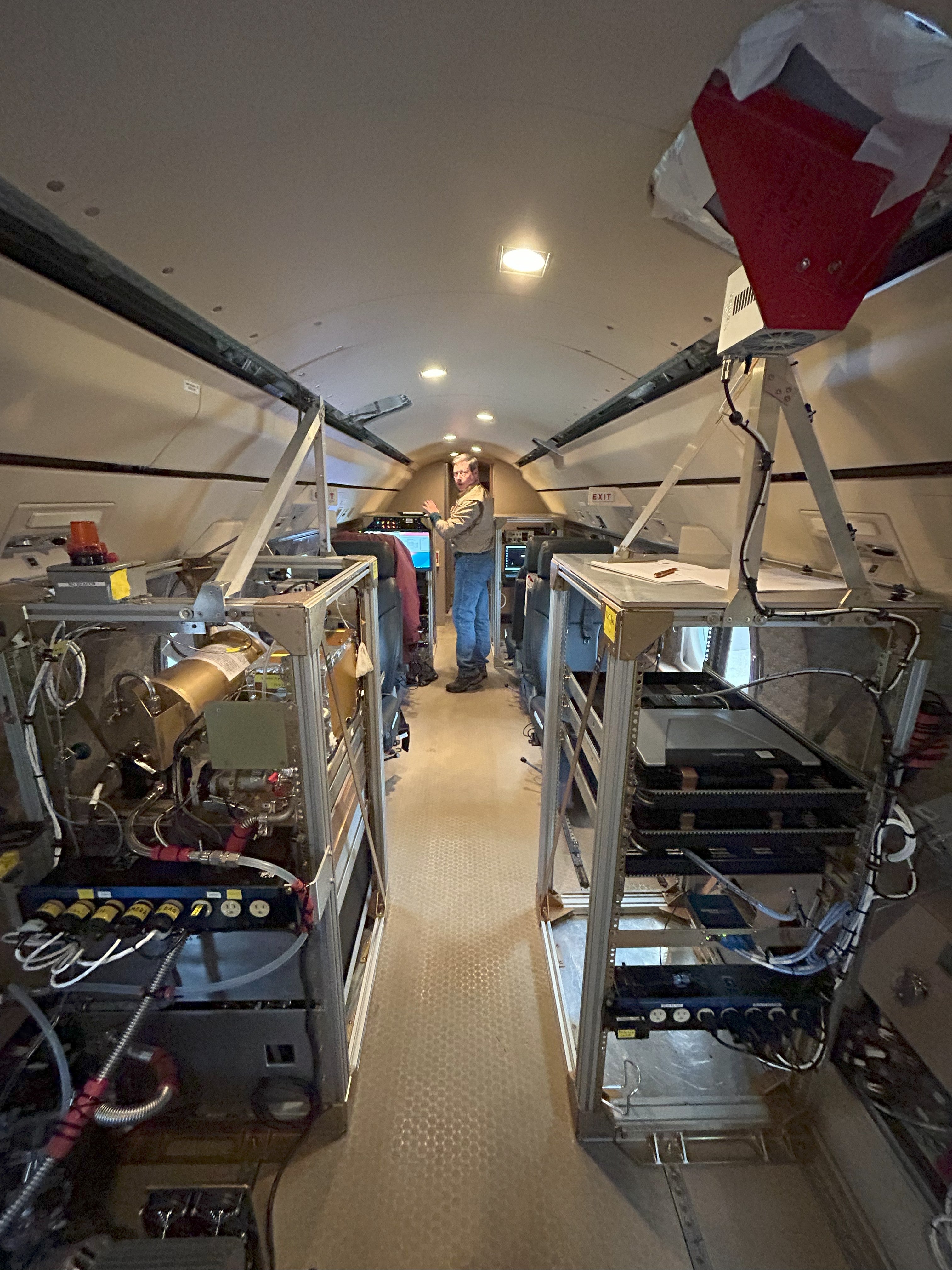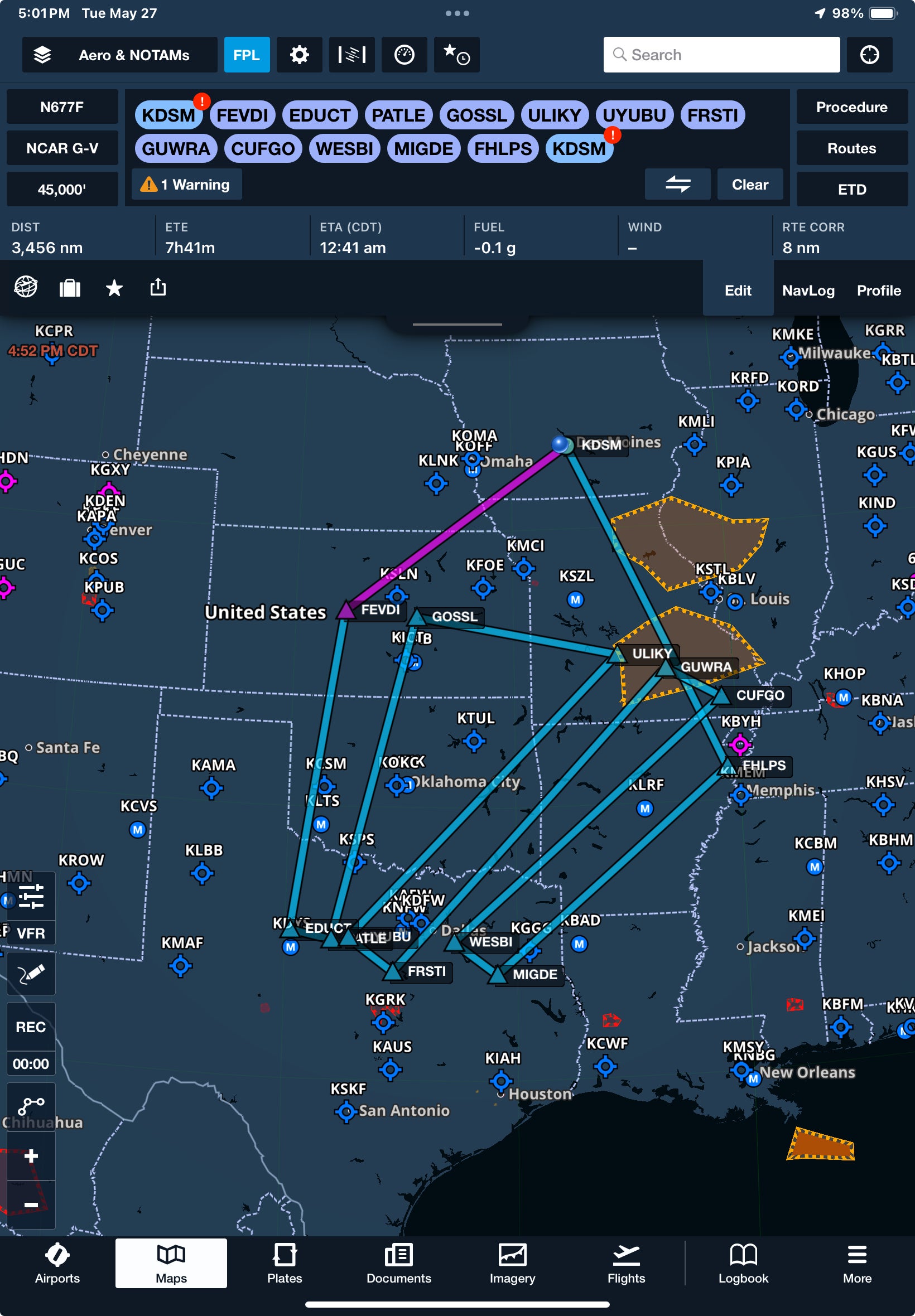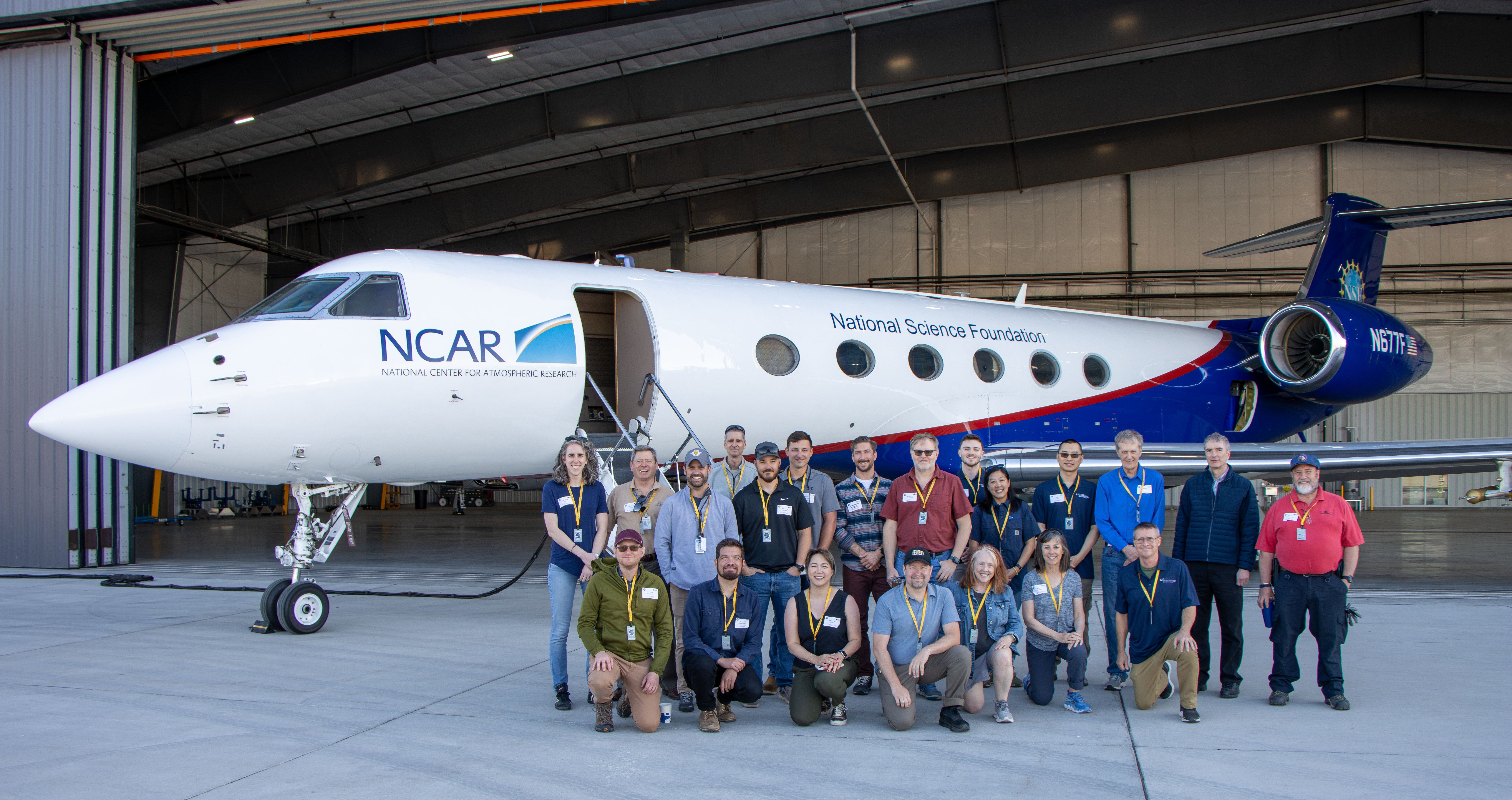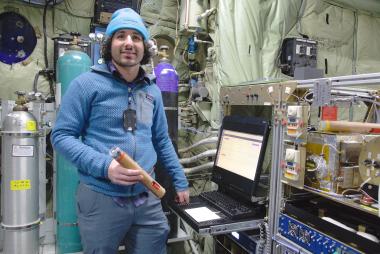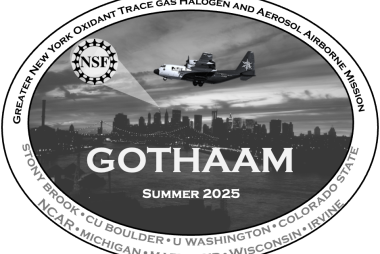Convective Gravity Waves in the Stratosphere (CG WaveS)
Illuminating the Hidden Dynamics of Gravity Waves in the Atmosphere
NSF NCAR EOL is supporting a pioneering research effort to make first-ever direct measurements of how thunderstorms generate gravity waves that propagate into the stratosphere
The NSF NCAR GV aircraft, managed by EOL's Research Aviation Facility, getting ready for a night mission
High above thunderstorms and weather fronts, invisible waves ripple through the stratosphere quietly shaping the behavior of our atmosphere with profound implications for global atmospheric circulation. NSF NCAR’s Earth Observing Laboratory is currently supporting the Convective Gravity Waves in the Stratosphere (CG WaveS) campaign, a project designed to directly observe and analyze these elusive gravity waves for the first time using advanced airborne measurement systems. This ambitious research program addresses gaps in our fundamental understanding of how deep convective systems generate gravity waves that propagate throughout the stratosphere and above, influencing weather patterns and dynamics on a global scale.
Thunderstorms are a significant source of gravity waves. These waves transport vast amounts of energy and momentum from the lower to the upper atmosphere, helping drive global circulation patterns and influencing weather and climate. While their effects are significant, from altering jet streams to affecting ozone distribution, gravity waves have remained difficult to measure directly, especially those produced by deep convective storms.
Funded by the U.S. National Science Foundation and led by scientists from the University of Miami and GATS Inc, CG WaveS is the first project designed to observe the complete lifecycle of convective gravity waves - from their creation by thunderstorms, to their growth and movement through the stratosphere, mesosphere and even lower thermosphere, and to their eventual dissipation. These insights will help refine weather models that currently rely on assumptions due to the lack of direct measurements.
Scientific payload installed inside the GV cabin
At the heart of the project is NSF NCAR’s GV research aircraft carrying an arsenal of cutting-edge systems: A Rayleigh lidar that measures temperature variations between 25 and 65 kilometers altitude, while a sodium (Na) resonance lidar tracks winds between 80 and 100 kilometers using sodium atoms naturally present in the atmosphere. A set of airglow cameras detects faint atmospheric emissions 85 kilometers above Earth, providing a wide-angle view of wave structures across a 700 to 900-kilometer swath. Combined, these instruments reveal the structure and movement of gravity waves in unprecedented detail. Meanwhile, additional atmospheric sensors aboard the aircraft measure gravity waves along with real-time turbulence and composition data at flight level, helping researchers understand how breaking waves mix air between the troposphere and stratosphere.
CG WaveS officially launched on May 16 and will run through June 15, 2025. The project is based in Des Moines, Iowa, with flight operations focused on the central United States. This region, known for frequent and intense spring thunderstorms, offers ideal conditions for studying gravity wave generation. The Midwest is also covered by a dense network of weather radars and radiosonde stations, providing critical support data for both flight planning and scientific analysis.
Flight Plan for Research Flight 5
The timing of CG WaveS, guided by a multi-year climatology developed by the science team, has proven especially fortunate. Recent outbreaks of significant thunderstorms including supercells, squall lines, and MCS events across the Midwest have created ideal conditions for capturing these elusive waves. The team has already successfully completed several nighttime flights, taking off at twilight and tracking storm systems throughout the night. Each flight spans about 7 to 8 hours and covers up to 7,400 kilometers, often capturing wave activity from multiple storm systems in a single night.
Behind every successful flight is the operational expertise of NSF NCAR EOL’s Research Aviation Facility. The team manages aircraft readiness, instrument integration and operation, flight coordination, and aviation logistics, freeing scientists to focus on the data. EOL’s data management team ensures that the vast stream of airborne and ground-based measurements is collected, quality-checked, and archived for long-term research use. Additionally, NSF NCAR’s Mesoscale and Microscale Meteorology Laboratory (MMM) provides customized storm forecasts to guide flight plans.
CG WaveS integrates airborne data with satellite imagery, weather radar, and high-resolution weather models. Meanwhile, advanced computer simulations help interpret what’s observed in the sky and extend understanding to regions that can’t be directly measured.
Beyond advancing atmospheric science, CG WaveS aims to improve the representation of gravity waves in global weather and climate models. These improvements could lead to better predictions of phenomena like sudden stratospheric warming events, shifts in jet stream patterns, and long-range weather changes.
In essence, CG WaveS is shining a spotlight on one of the atmosphere’s most mysterious forces. By combining cutting-edge technology, strategic operations, and advanced modeling, the project is unlocking new knowledge about how energy moves through the atmosphere—and how that movement shapes our planet.
The CG WaveS team during the Open House

